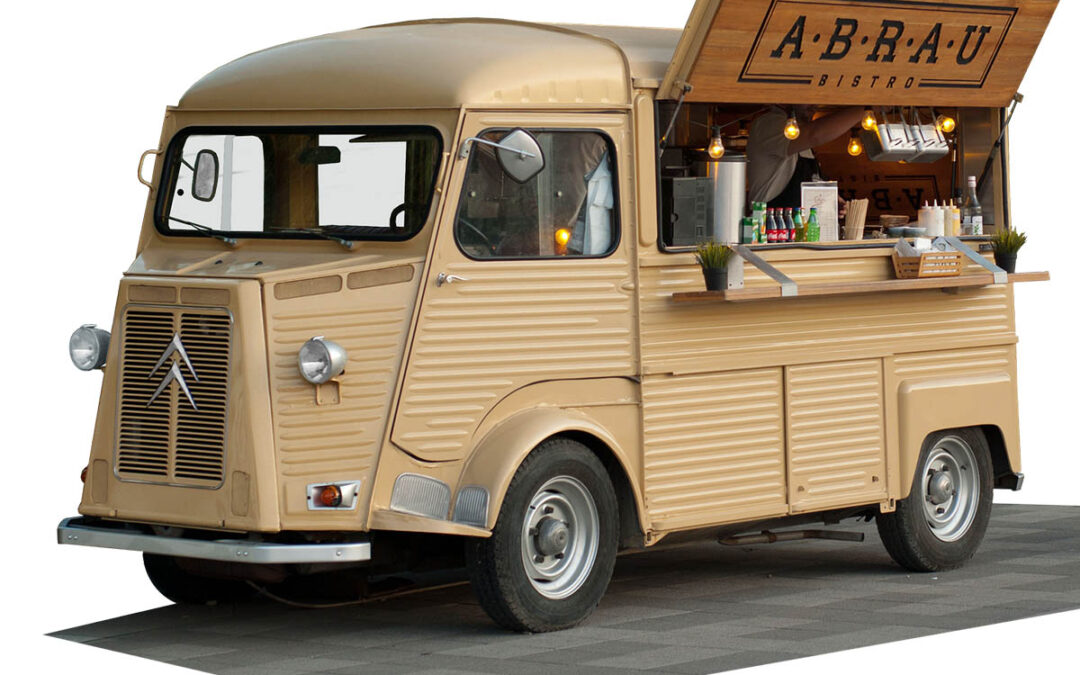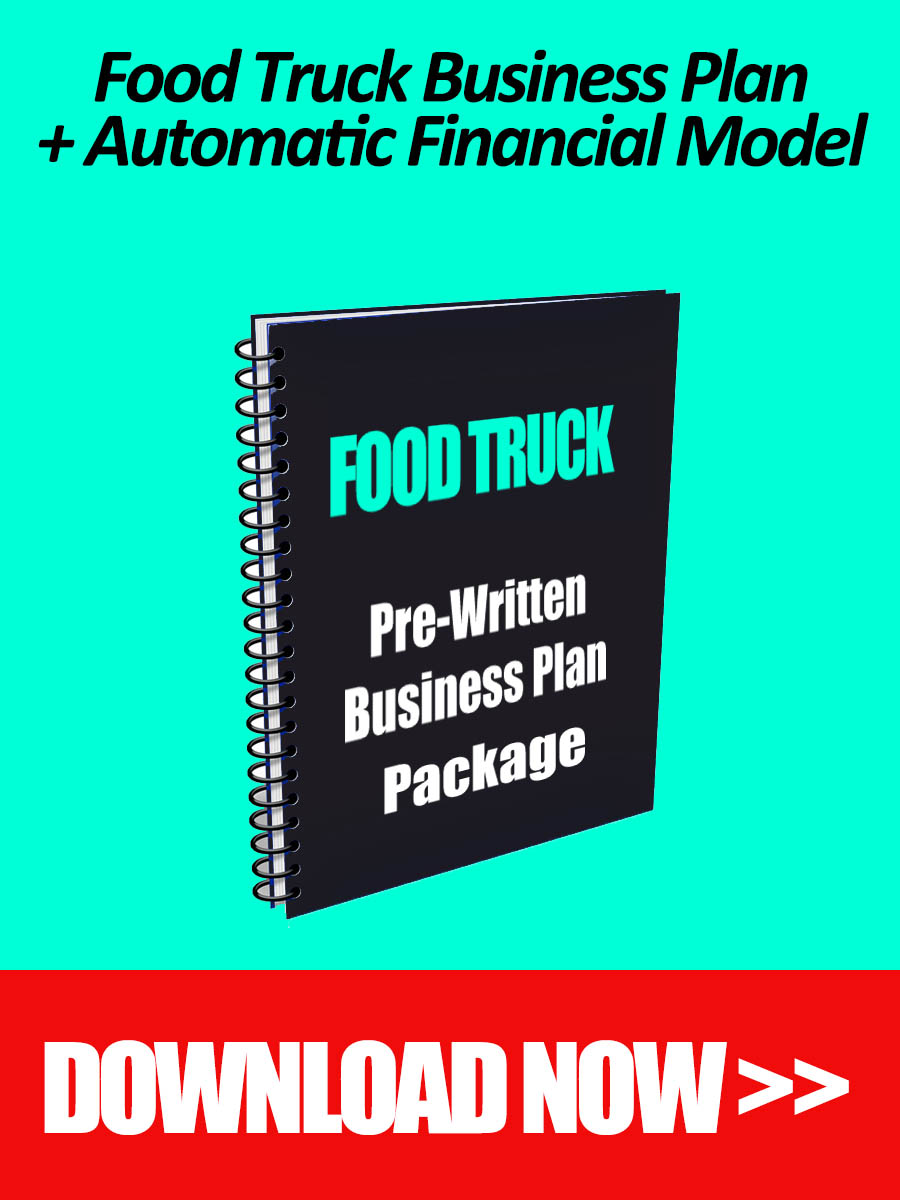Planning to start a food truck?
Congratulations! The food truck industry is a growing one with a potential to earn big bucks. However, before you launch your own mobile food startup, there’s something you need to take care of first—writing a food truck business plan.
Before we get started, you might be interested to check out our Ready-made Food Truck Business Plan Template with pre-written text and automatic financials which you can easily customize and adapt to your own project, no financial expertise required.
In this post, we’ll share with you the various sections included in a typical food truck business plan. We’ve also included examples to make it easier to pen a winning document.
So, let’s get started.
Food Truck Executive Summary
Important things that must be included in the executive summary of your food truck business plan include:
- What kind of food will you offer?
- What will be your area of operation?
- Why will the kind of food you plan to sell be a hit with people in your business location?
- What are the projected costs? When will you break even? When will you start earning profits?
- What are your future goals for your business?
- How much capital you are looking to raise?
In addition, you should also include a mission statement here.
Here’s a sample mission statement:
To provide people around <Your Food Truck Location> a gourmet and healthy Cuban sandwich experience, <Your Food Truck Name> uses local ingredients and will provide gluten-free options for those with special dietary needs.
You can even include a summary of your food truck financials such as a chart showcasing your revenue and profit forecast and which you will develop further in a later section.
Food Truck Company Description
In this section you should explain your food truck business in detail. Here are the main things that should be included:
- Who owns the company?
- Who will be a part of the management team?
- What kind of food truck you plan to use?
- Why are you opting for a food truck in place of a brick-and-mortar outlet?
- Are you going to use a commissary kitchen or will you prepare the food inside the truck?
- Who are your targeted customers?
- How will your menu compete with those of existing restaurants or food trucks in and around your business location?
- What are the unique features of your business model? What gives you a competitive advantage?
Here’s a sample company summary:
<Your Food Truck Name> will be a food truck operating in <Your Food Truck Location> serving gourmet Cuban sandwiches. <Your Food Truck Name> will use locally sourced ingredients to make a variety of mouthwatering sandwiches, while also serving cold pressed juices. The menu will be updated seasonally and will include options for the growing number of customers who prefer a gluten-free, natural option.
The business will be owned and operated by brothers Joe (50%) and Ron (50%).
Food Truck Management Team
Joe has over 10 years of experience in the food and beverage industry under his wing. He has worked as a head chef of a popular burger joint in the City.
Ron is a business graduate from the University of New York. He will take care of everything related to managing the business, finance and marketing.
Food Truck Target Market
Who are your clients? This is the place where you should define your customer profiles as clearly as possible. Look at the example below to get an idea about how to write it.
Target Market
We surveyed around 1,500 prospects in the City and our results show that the majority of respondents (78%) would try our Cuban sandwiches if given the opportunity to do so.
Based on the results of the survey and other factors our target market is: (1) Teenagers (2) employees and business people short on time (3) parents and their children visiting the main square, (4) customers who are health-conscious.
Market Analysis
In this section, explain in detail how you are going to fit into the existing business landscape. Include information about global and local market statistics, your competition, your competitive advantage, potential risks, etc.
Here’s a sample market analysis:
Competition & New Entrants
Most restaurants and cafes active in our area of operation are indirect competitors in one way or another.
However, After closely studying our area of operation, we have found that most local food truck competitors focus on burgers, pizzas and hotdogs. Thus, our Cuban sandwiches offering will be the first of its kind within the vicinity.
Some players opt to prepare their food on the spot within the truck itself while others use the truck as a sales counter to sell pre-cooked food. Both options have obvious advantages and disadvantages. We choose to cook the meat on the spot while many fillings and ingredients will be pre-prepared for immediate usage.
Critical Risk
It is very important to understand the local municipality’s rules and regulations when it comes to parking space, commissary space, business hours and other relevant factors.
It is crucial to purchase a food truck from a reputable manufacturer as this will be the core of our business. We will make sure to invest in a heavy-duty food truck with a solid warranty and minimal maintenance.
Food Truck Competitive Advantage
Affordable pricing and a fast service are our main competitive advantages. Since most fillings and breads will be prepared beforehand, the average customer wait time will be under seven minutes. The average wait time at other competing food trucks in the area are above 14 minutes. Additionally, our average order value is 5 USD, while other competitors are at 7 or 8 USD per order.
Another competitive advantage is our appeal to teenagers. Teenagers are notoriously picky eaters, and while other food trucks have high quality food, it may not appeal to them. Cuban sandwiches are a good option for teenager lunches and dinners. <Your Business Name> couples a low price point, with a healthy option, and a food youngsters love.
Finally, our gluten-free and natural options are sure to satisfy the need of health-conscious customers.
Product Mix & Marketing Plan
This is where you can talk about your products in greater detail, including pricing details. Along with that, share your marketing plan with the reader in this section.
When writing your marketing plan, remember to list all strategies that you plan to use to create a buzz about your business and attract new customers.
Here’s a short sample product mix & marketing plan:
Product Mix
<Your Food Truck Brand> will specialize in crafting amazing Cuban sandwiches. The menu will include the classic ham and cheese Cuban sandwich with many other creative variations, cold pressed juices and soft drinks. We will also be providing gluten-free, and brown bread options for customers who have special dietary needs.
We will purchase our bread, ham, meat, cheese and other ingredients from a small number of handpicked quality suppliers. We will keep our inventory small to ensure product freshness.
Our pricing is quite affordable with an average order value of 5 USD per sandwich.
Marketing Plan
We plan to promote our food truck by leveraging a number of key marketing channels to build brand awareness and generate customers. These channels include our website, social media, email shots, flyers, coupons, partnership with local food influencers, partnerships with popular food portals.
Food Truck Financial Projections
Finally, no food truck business plan is complete without a detailed section on your financial projections. In this chapter, you need to include:
- A cost forecast: Define here your various fixed and variable costs.
- A revenue forecast: Show here your projected revenue over the first 12 months and then yearly for the next three years
- A projected Income Statement: Show in a table your profit and loss forecast for three years
- A projected Cash Flow Statement: Show in a table your cash flow movement over the next three years. Your cash flows should be detailed on the operation, investment and financing levels.
- A projected Balance Sheet: Show in a table the summary of your assets and liabilities
Finally, mention how much capital you need to raise and describe how you plan to utilize this capital to launch and grow your food truck business.
That’s it! You are now ready to write your food truck business plan. In case you are short on time, you can also check our ready-made food truck business plan template with automatic financials. This will save you tons of time and will allow you to build a food truck business plan within a few hours.



